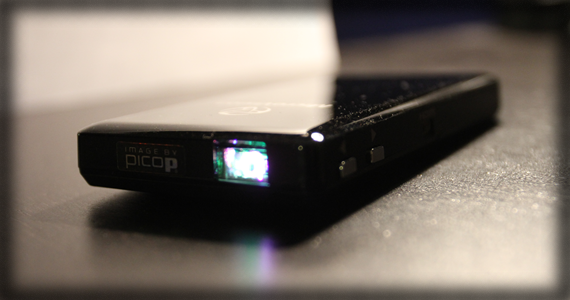This complete hardware review examines MicroVision's SHOWWX+ HDMI pico projector, evaluating the pocket-sized device's laser projection technology, infinite focus features, and multi-device connectivity during the early era of portable projection solutions for smartphones, tablets, and mobile entertainment systems. Patrick Bisch provides detailed assessment of the 4.3-ounce projector's WVGA resolution output, 15-lumen brightness performance, and iOS compatibility limitations while highlighting the innovative laser light control system that differentiated it from traditional DLP projection technology. The coverage captures the developmental period when miniaturized projection devices competed to address mobile display expansion needs before larger screens and wireless casting became standard.
The technical specification analysis covers the SHOWWX+'s 848×480 WVGA resolution, 16:9 aspect ratio, 60Hz refresh rate, and complete connectivity options including micro HDMI, VGA, mini USB, component, and iOS device inputs powered by an 1800mAh lithium-ion battery providing approximately 1.5-2 hours of operation. The build quality assessment details the plastic construction concerns, glossy surface fingerprint susceptibility, weight distribution characteristics, and structural integrity limitations that affected perceived durability and premium positioning despite the innovative technology connection. The infinite focus feature evaluation examines the projector's ability to maintain image clarity across varying projection distances without manual focusing adjustments, addressing a important usability challenge in portable projection scenarios.
The projection performance analysis encompasses the laser light technology advantages that provided even brightness distribution across the projected image, eliminating the "flashlight effect" common in traditional portable projectors while delivering 100-inch diagonal display features. The iOS compatibility assessment covers TV-out application support limitations that restricted features to select apps like Netflix, Rage HD, Keynote, Photos, and YouTube while noting the absence of full device mirroring features that would later become standard with AirPlay technology. The market positioning evaluation examines the $369 pricing strategy competing against early portable projection solutions during the period when mobile display expansion relied on dedicated hardware rather than integrated wireless features.
This MicroVision SHOWWX+ review represents the early portable projection development period when specialized hardware devices aimed to expand phone display features through miniaturized laser projection technology and complete connectivity options. Looking back 13+ years later, the portable projector concept evolved importantly with improved resolution, brightness, battery life, and wireless connectivity, though smartphone projection features and large-screen device adoption ultimately provided more practical solutions for mobile display expansion. The laser projection technology approach influenced modern projection systems, heads-up displays, and augmented reality applications that leverage precise light control for enhanced visual experiences across multiple industries and use cases. The infinite focus innovation addressed fundamental usability challenges that became standard expectations for portable projection devices, influencing consumer electronics design principles for mobile accessories and display technologies. The iOS compatibility limitations highlighted the importance of platform connection and complete app support that became critical for mobile accessory adoption and user experience satisfaction. The build quality concerns showd early portable electronics durability challenges that influenced modern device protection standards, material selection, and structural engineering approaches for mobile accessories. The connectivity versatility established expectations for multi-device compatibility that influenced universal accessory design, adapter standardization, and cross-platform support needs. This moment captures the transitional period when dedicated portable projection hardware competed against integrated device solutions before wireless display casting, larger mobile screens, and improved device sharing features addressed mobile display expansion needs through more integrated and user-friendly approaches.
This summary was created by Dave Rogers. The original post was written by Patrick Bisch and published on November 1, 2011.
If you'd like to view the original post, you can find it here.
